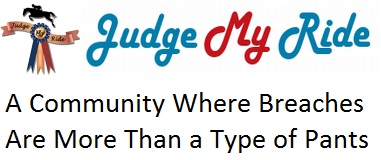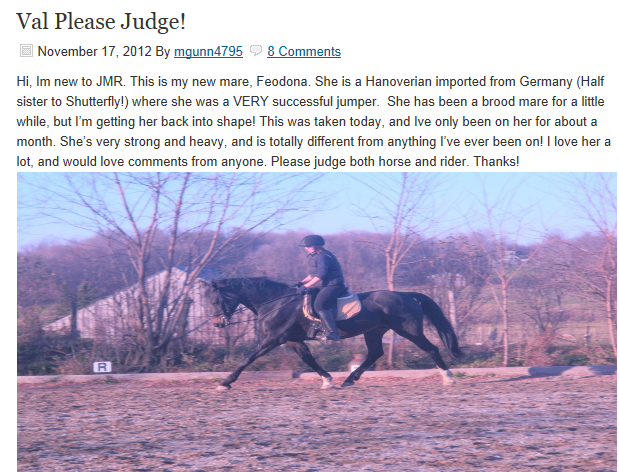
Comments taken from food posts prove to be perfect examples of women upholding their own stereotypes. Comments posted on food blogs often paint the user’s days as less fulfilling and productive as those of their family members. This is evidenced in a comment taken from a post for “Scalloped Potatoes and Ham” off of one of the largest food blogs online, The Pioneer Woman, states that user Deborah Chessey says ““I made this meal last night and every person in my family loved it. There is only one thing that I added: during the cooking time I watched the Pilot of “Revenge” and I found it to be just as captivating as you suggested it would be. Today my kids are at school, my husband is at work and I am eating leftover scallops and watching more episodes of Revenge.” (Chessey). The comment alludes to the argument that food blogs cannot be seen as mediums which further the feminist movement as it references the unproductive realities of many housewives. Deborah, for example,states that she is sitting around and watching TV all day while her husband goes to work. It also alludes to the rhetoric behind their choice to fill that position. She may be happy to be a housewife, but at the same time, she is doing nothing but waiting on her family, in a literal and figurative sense; wasting time until she has a family member whose bidding she must attend to or meal she must prepare.
Ree Drummond also separates her blog into categories, specifying what recipes are “cowboy food”, meaning that they tailored to men’s stereotypical taste of meat and potatoes, or “cowgirl food”, featuring more pastas, salads, and gourmet-inspired dishes. Despite the recipe for the “Marlboro Man Sandwich- PW Style” in the post “Make This Tonight” being regarded as a ‘cowgirl’ recipe, commenters were still focused on their husbands and families rather than their own opinions on the food. For example, as seen below:
This comment not only never mentions her own opinion on the recipe, despite it being tailored for women’s tastes as ‘cowgirl food’, but it also mentions the fact that she makes her husband’s lunch every day, tailored to his specifications- despite the fact her husband, in this modern world, is more than capable of making his own. Even if these examples of users are all food community members who believe that their domestic involvement is a choice, it is still their person that is in the kitchen, preparing the food, rather than having their husbands as equal partners in this domestic activity.

Driving home this inequality of women in the kitchen is the profiles and personas of the food community users. On the website Tasty Kitchen they feature a section with introductory profiles of certain bloggers in their community. Of the twenty six profiles, twenty four of them were women, fifteen of them were stay-at-home mothers, and only six of them had careers outside of their homes (Tasty Kitchen). Profiles, as well as the blogs that the users run, painted their lives ideal and domestically easy. Tina, a profiled member who runs the blog Mommy’s Kitchen, states that while she is a stay-at-home mom, she “prefers Domestic Engineer only because it sounds much more professional.” (TK-Erica). Below is also fragment of the “About” Page from her own blog:

Not only do these statements allude to the societal trend of looking down on stay-at-home mothers, it hint at slight unhappiness about her state as a homemaker. Especially in her “about” page, she focuses on her family rather than who she is separate from those she cooks and cleans for. While it may have been their ‘choice’ to stay at home, this choice was most likely influenced by societal factors and was not a one made of pure self- interest. Delilah Campbell, in the essay “Housewives’ Choice?” from the journal ‘Trouble and Strife” (2001), confirms similar views by commenting on how it is difficult to see domesticity as a hobby, especially for women. As she states, women are expected to fulfill a domestic role to some extent, and until housework is equally shared by men and women, it is hard to see this choice as a valid option, free of outside factors and pre-imposed gender expectations (Campbell par. 30). These personas are also validated through the blogging process itself.
This sense of validity in their persona comes with using blogging as a confessional medium. Blogs have an incredible amount of freedom for expression, which is afforded by the Internet. As scholar Laurie McNeill mentions, they are informal biographies that are not ‘vetted’ my editors or publishing houses to determine their marketability (McNeill 25). This means that the person being presented is not crafted by a company looking actively for an audience, but is more organic and honest. The person, and the activities that she is talking about, are actual representations of her life; not only does she talk about domesticity but she is actually living it. Scholar Kavita Hayton states that blogs are the “perfect platforms” (204) for life writing because the author never needs to face their audience. The are therefore are more likely to speak openly and honestly, creating an online self that is similar-if not identical- to their offline identities (204). The immediacy and accessibility of the posts are also seen traits that creates a sense of honesty about the blogger’s persona, as they”blur the distinction between online and offline lives” (McNeill 25). Readers would then gather a feeling of being presented with an authentic example of the blogger’s reality, and that the stories being divulged are reminiscent of those told between friends in reality. Bloggers are exposing this side of themselves willingly and without agenda or ‘building’ of that persona to appeal to a certain audience, as may be done in professional writing or television. What is written about is truly their lives; the disconnect between gender equality shown on their blogs is truly occurring in the real world.
Food blogs offer a medium of celebration and interaction for food-loving users. They are great sources of escape for foodies around the world and form the basis for a strong online community. However, their domestically-based features feed into stereotypes that uphold women’s gender roles as cooks and caregivers, which strengthens the scholarly argument that food blogs hinder true gender equality on the domestic front. This is seen in the commentary by the users and the personas that they present. Food blogs and it’s surrounding community is an enjoyable activity for food-lovers of all kinds, but when analysed deeper, the online food blog community holds a lot more than just recipes.
WORKS CITED
Alex. “Web Log Comment.” The Pioneer Woman Cooks. 31 May 2012. Web. 31 October 2012.
Campbell, Delilah. “Housewives’ Choice?” Trouble and Strife 42 (2001): n. pag. Web.
Chessey, Deborah. “Web Log Comment.” The Pioneer Woman Cooks. N.p., 11 April 2012. Web. 31 October 2012.
Hayton, Kavita. “New Expressions Of The Self: Autobiographical Opportunities On The Internet.” Journal Of Media Practice 10.2&3 (2009): 199-213. Academic Search Complete. Web. 16 Sept. 2012.
Mcneill, Laurie. “Teaching An Old Genre New Tricks: The Diary On The Internet.”Biography: An Interdisciplinary Quarterly 26.1 (2003): 24. Academic Search Complete. Web. 16 Sept. 2012.
Tasty Kitchen Blog: Meet the Member!. Tasty Kitchen. 15 November 2010. Web. 31 October 2012.
Tina. About. Mommy’s Kitchen. Web. 15 November 2012.

















